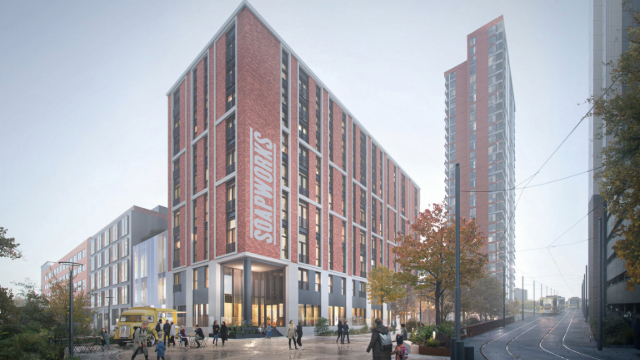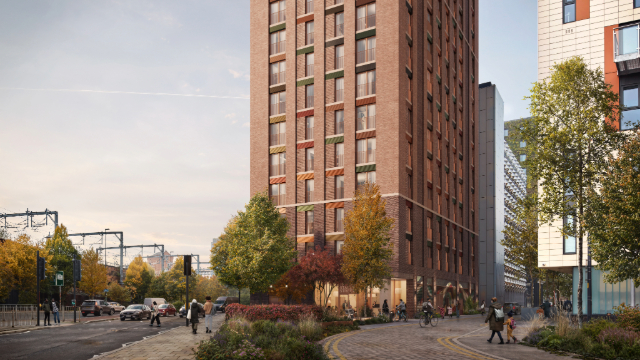COMMENT The build-to-rent sector has defied political and economic uncertainty, recording £4.5bn of investment during 2023. This is the second-highest year on record for UK BTR investment, showing its resiliency and attractiveness.
There are a multitude of reasons for BTR’s growth in the UK. One of the key drivers has been the rise of single-family housing, which demanded nearly half (42%) of BTR investment in 2023 with £1.9bn deployed into the market – a major uplift on the £360m recorded in 2022.
Multi-family housing continues to evolve, with strong demand for quality urban developments in key cities such as Manchester, Birmingham, Derby and Milton Keynes. Then there is co-living, or, as the British Property Federation described in its October 2023 report, the “new kid on the block”.
Cultivating communities
Co-living represents a much more nascent part of the UK BTR market. The BPF defines it as “imaginatively designed individual units with a floorspace that typically ranges from 16-27 sq m, with a bathroom and basic kitchen facilities and access to communal facilities including shared kitchens, living and working spaces”. Developments can be amenity-rich, often featuring fitness facilities and co-working spaces, with some schemes also incorporating spas, saunas and swimming pools.
Co-living offers more than just amenities or residential space. Its strength, much like multi-family BTR, stems from community creation. If done right, co-living can help bring people together, cultivating different communities of residents within developments.
These communities can also be multi-generational. Unlike purpose-built student accommodation that is designed for a specific need, co-living is open to all ages. Increased affordability and flexibility are also benefits, with the shared-space aspect of co-living potentially making it a more accessible option compared to multi-family or single-family housing. Given the cost increase of private rental housing, co-living emerges as a compelling option for many.
Despite its potential benefits, co-living is yet to properly take off across the UK. It remains highly concentrated in London, with 31,000 beds in operation and development as of June 2023.
Inconsistent planning approaches
One key factor currently holding the model back is the planning system. The model is a new concept for planning, and planning vagaries and regional policy differences, in particular, are posing difficulties for developers when looking at bringing projects forward.
The absence of a dedicated planning classification has led to inconsistent approaches to co-living at local planning level. The resulting uncertainty does not promote development and could also be a hurdle for businesses aiming to enter the sector or expand their offerings.
While part of the planning challenge results from market trends moving faster than the current system, there are a growing number of completed co-living developments across the UK, with more going through planning, coming out the ground and beginning construction.
This points to a wider matter, for all of the BTR sector, which is the importance of education. At a recent Shoosmiths roundtable discussion, Theo Plowman, assistant director at the BPF, said: “What we are hearing from the government side is there are challenges to how they understand build-to-rent coming into this space. It is important to clarify that it is not competing with home ownership.”
Terms like multi-family, single-family housing or co-living may resonate with most of those working in the living sector, but at a local or national level, there is still a lack of knowledge.
Inform and educate
That is why it is critical for those operating across residential real estate to inform and educate others about BTR, its different models, and its benefits – not as a rival to homeownership, but as a complementary option.
For co-living specifically, this means not only engaging certain locations or age demographics, but emphasising that it is a multi-generational option for those wanting to become part of a new community of residents or for people looking for high-quality amenities, lease flexibility or more affordability.
Focusing on education is key to shaping future policy and ensuring that co-living no longer sits within the grey areas of the planning system. It must be able to attract the investment and development needed to shift it from a nascent market to an established asset class.
This is the same journey that multi-family BTR undertook five to 10 years ago, and what single-family is currently going through as it sets new development and investment records.
Co-living has significant potential. Those organisations already successfully operating developments are clear evidence of that. However, there are obstacles yet to overcome, beginning with raising awareness of it as an investment asset class and, more importantly, a key tool that could help boost residential supply in the UK.
Judy Fawcett is co-head, living sector at Shoosmiths











